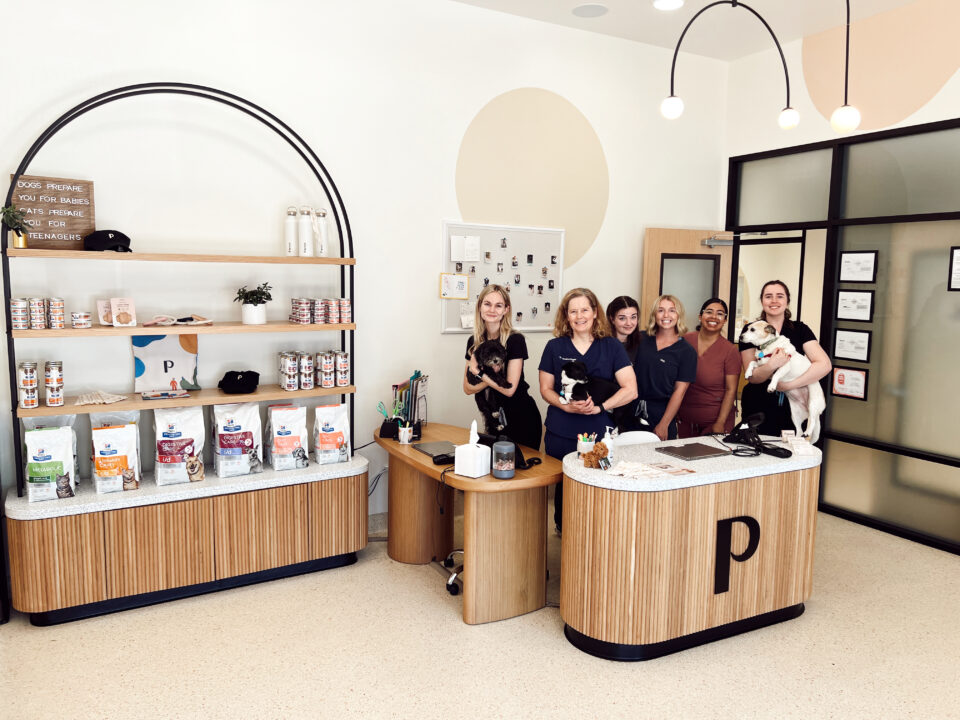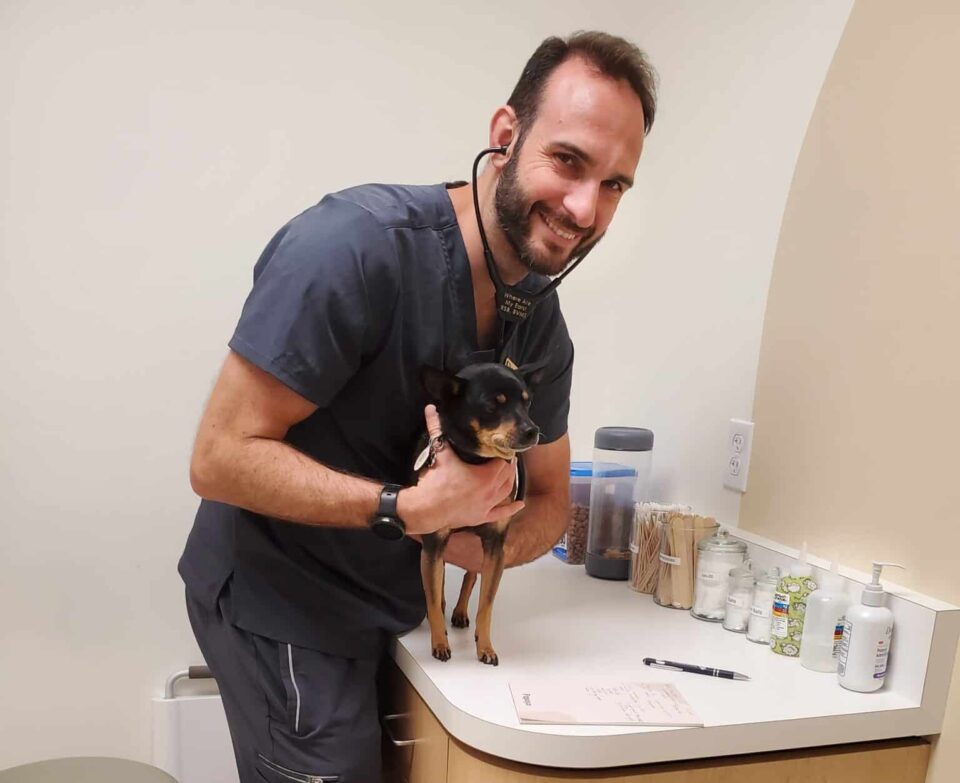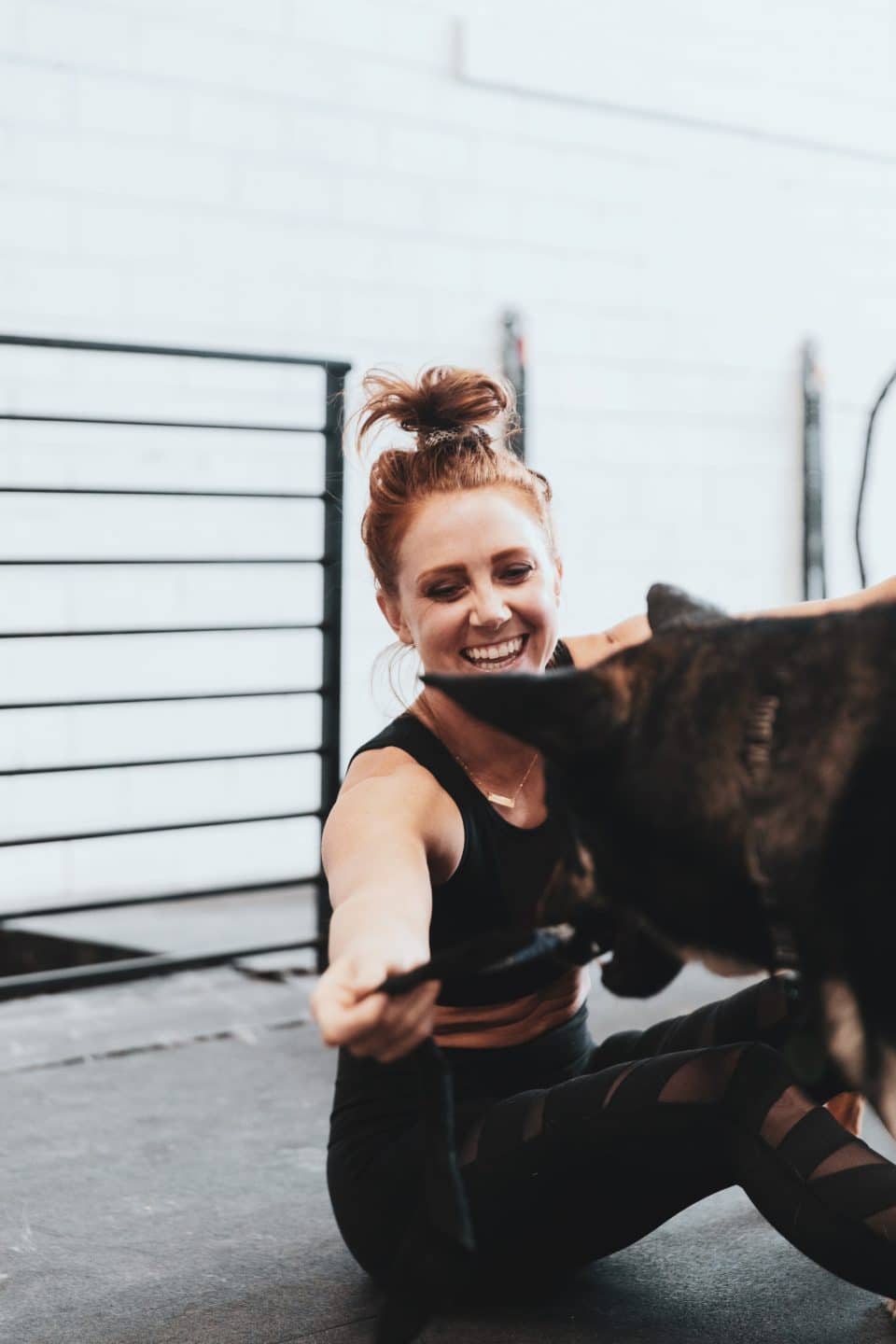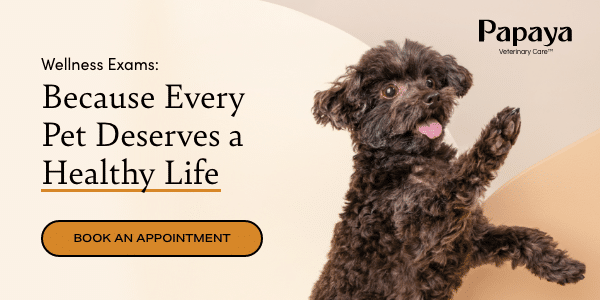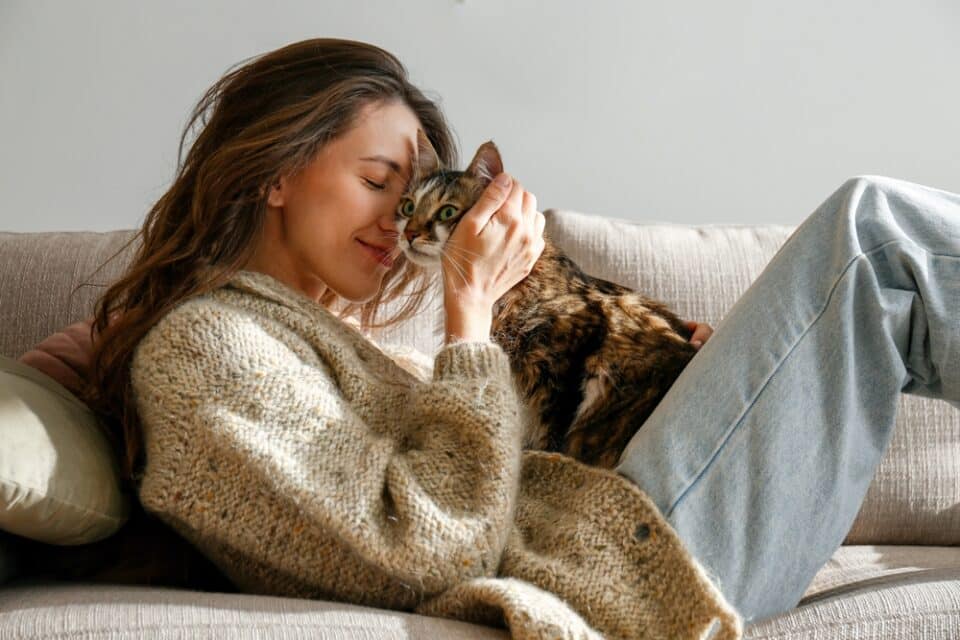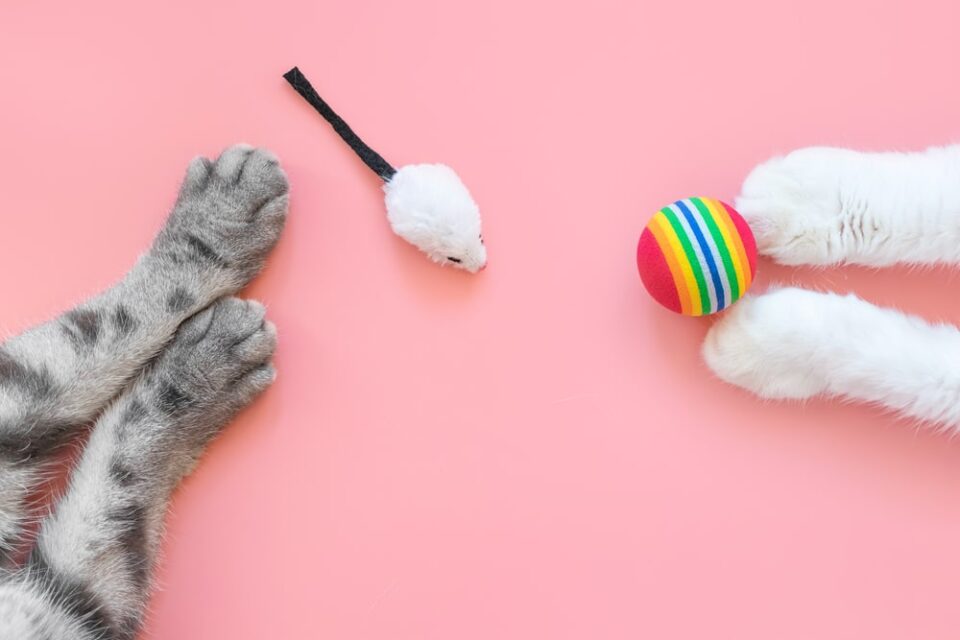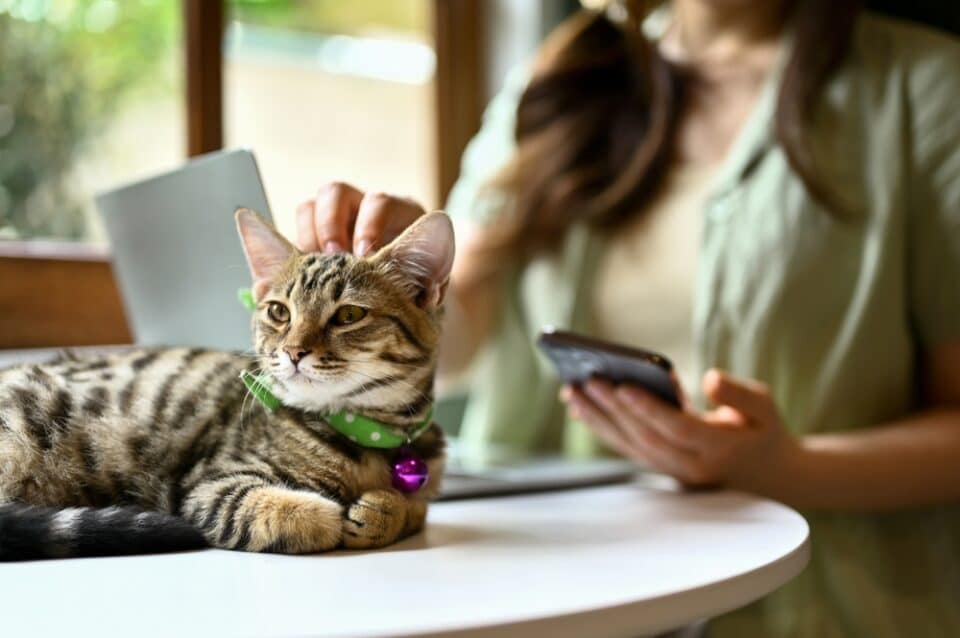Cats
8 min read
Feline Nutrition: Decoding the Best Diet for Domestic Cats
Published on Oct 15, 2023
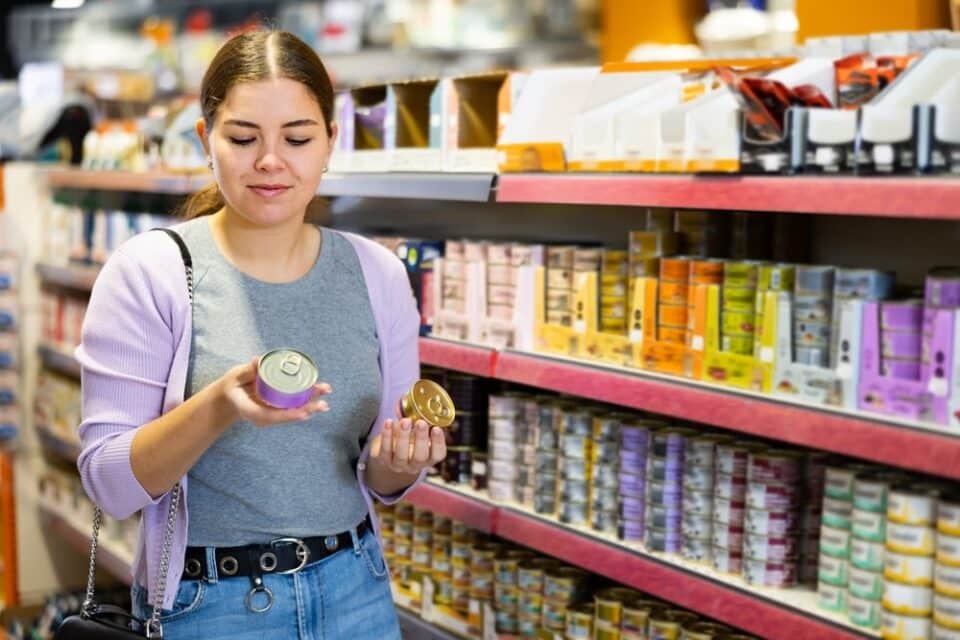
The purring companion who keeps you warm on cold nights and cuddles away your worries is not just a pet. They are a cherished member of your family. And as responsible cat owners, it’s our duty to ensure they live a healthy, happy life. Whether you have a senior cat or a new kitten, one of the key aspects of your cat’s well-being is their nutrition. In this article, we’ll delve deep into the world of feline nutrition, decoding the best diet for domestic cats.
Understanding Feline Nutrition
Before we dive into cat food options, let’s first understand the fundamental nutritional needs of our furry friends. Cats are obligate carnivores, meaning their diets must primarily consist of animal-based proteins.1 Here’s a brief overview of what your cat’s diet should include:
- Protein: Cats thrive on high-quality animal protein. Amino acids are the building blocks of protein, and cats require specific essential amino acids like taurine, arginine, and methionine for optimal health. These amino acids are critical for maintaining healthy skin, a shiny coat, and overall growth.2
- Carbohydrates: Cats are not big fans of carbs. Their bodies are not designed to process carbohydrates efficiently,3 which is why they prefer a low-carbohydrate diet. High carbohydrate consumption can lead to obesity, a common concern among cat owners.
- Fats: Fats are essential for energy and the absorption of fat-soluble vitamins. Fats should make up a significant portion of your cat’s diet, but be mindful of the source and quality of fats.
- Vitamins and Minerals: Cats need essential vitamins and minerals, including Vitamin A, Vitamin D, calcium, and phosphorus, to name a few. These nutrients play a crucial role in various bodily functions, from maintaining healthy bones to promoting proper organ function.4
Now that we’ve covered the basics, let’s explore the cat food options available to meet these nutritional needs.
The Best Cat Diet Choices
When it comes to cat food, there are several options to choose from:
Dry Cat Food: Dry cat food is convenient and has a longer shelf life. However, it’s essential to select high-quality dry food that doesn’t skimp on the nutritional value. Look for options that have a high protein content and minimal fillers like corn and wheat.
Wet Cat Food: Wet cat food, available in cans or pouches, is a favorite among many cat owners. It provides much-needed hydration and offers a higher protein content than some dry food. It’s especially beneficial for cats who don’t drink much water on their own.
Raw Cat Food: For the true purists among cat owners, raw cat food is gaining popularity. Advocates of this diet argue that it closely mirrors a cat’s natural diet and believe raw feeding can improve your cat’s coat, digestion, and overall vitality. However, it’s crucial to ensure that the raw food is handled with the utmost care to prevent contamination.
Homemade Cat Food: For some cat owners, creating homemade cat food is a way to ensure they have full control over their cat’s diet. However, it’s essential to do thorough research and consult your veterinarian before you begin a homemade pet food journey.
Let’s delve into these options in more detail.
Dry Cat Food vs. Wet Cat Food
Dry Cat Food: The Crunchy Choice
Dry cat food is like the kibble of the cat world. It’s popular among cat owners for its convenience. You can pour it into a bowl, and your feline friend can nibble on it at their leisure. It’s also easier to store, making it a practical choice.
However, it’s essential to be selective when choosing dry cat food. Some low-quality options contain high levels of carbohydrates, which are not ideal for your obligate carnivore. Look for brands that prioritize animal protein as the primary ingredient. You’ll also want to ensure that it contains essential nutrients, including those amino acids we mentioned earlier.
Wet Cat Food: The Perfect Moisture Source
Wet cat food is a fantastic choice for maintaining your cat’s hydration levels. Cats often don’t drink enough water on their own, which can lead to urinary tract issues. Wet food, with its higher moisture content, helps keep your kitty well-hydrated.
It’s also an excellent option for cats who have trouble chewing or have dental problems, as it’s easier to eat. Plus, it generally contains more animal-based proteins and fewer carbohydrates than dry food.
Benefits of Homemade Cat Food
Making your own cat food at home can be a rewarding experience, ensuring you have full control over the ingredients. However, it comes with a few caveats; it’s not like making human food. Here are the benefits and things to consider:
Benefits of Homemade Cat Food:
- Quality Control: Unlike canned food, homemade cat food allows you to choose the ingredients, ensuring the highest quality for your beloved cat.
- Personalization: You can tailor the diet to your cat’s specific needs and preferences.
- Fewer Fillers: Homemade cat food can contain fewer fillers than canned cat food, reducing the risk of allergies and obesity.
Things to Consider:
- Balanced Diet: Ensuring your cat gets all the essential nutrients can be challenging. Consult a veterinarian or feline nutrition expert for guidance.
- Food Safety: Homemade cat food must be prepared with utmost care to prevent contamination. Carefully follow food safety guidelines.
Now that we’ve explored the diet options, let’s shift our focus to the critical relationship between cat nutrition and their overall health.
Feline Health Considerations
The old saying, “You are what you eat,” holds true for our feline companions as well. Proper nutrition plays a pivotal role in a cat’s overall health. Here are some health considerations related to feline nutrition:
Obesity in Cats: A Growing Concern
Obesity is a common issue among cats, and it’s often linked to poor cat nutrition. Overfeeding, a sedentary lifestyle, and consuming high-carb diets are significant contributors to cat obesity. Carrying excess weight can lead to severe health problems, including diabetes and joint issues.
Cat Food Allergies: Uncovering Culprits
Cats, like humans, can have food allergies. Some common allergens in cat food include certain proteins like chicken, beef, or fish. If your cat displays signs of food allergies, such as skin issues, digestive problems, or excessive itching, it’s essential to consult your veterinarian and adjust their diet accordingly.
Understanding how nutrition affects your cat’s health is paramount. But it’s equally crucial to read and interpret cat food labels accurately.
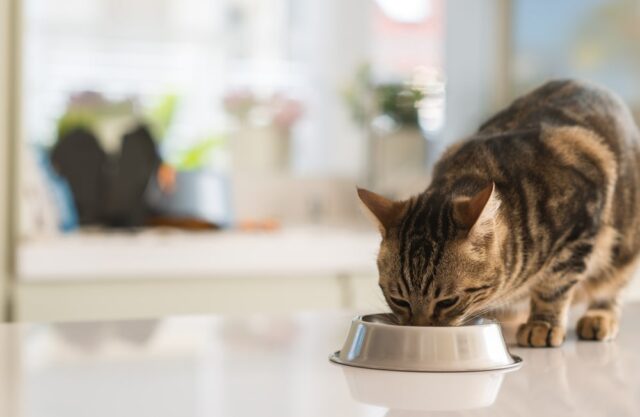
Reading Cat Food Labels: Deciphering the Code
The information on cat food labels can be overwhelming. But armed with the right knowledge, you can make informed decisions about what goes into your cat’s bowl.
Understanding Cat Food Labels
- Ingredients List: The ingredients are listed in descending order by weight. The first few ingredients are the most significant. Look for high-quality animal proteins at the top of the list.
- Guaranteed Analysis: This section provides information on the minimum and maximum percentages of crude protein, crude fat, crude fiber, and moisture. Ensure the protein content is substantial and fat content is moderate.
- AAFCO Statement: The Association of American Feed Control Officials (AAFCO) statement indicates whether the food is complete and balanced for your cat’s life stage. This statement also indicates that the manufacturer is holding itself to a higher quality control standard than the FDA.
Hidden Ingredients to Watch Out For
- Fillers: Avoid cat foods that are heavy on fillers like corn, wheat, and soy. These provide little nutritional value and can lead to obesity.
- Artificial Additives: Be cautious of artificial colors, flavors, and preservatives. These can trigger allergies and have no place in a healthy cat’s diet.
Now, for those who want to take it a step further and whip up some homemade cat food, we’ve got a treat for you.
Homemade Cat Food Recipes: Made with Love
Creating homemade cat food can be a labor of love. Here are a couple of recipes to get you started, but always consult your veterinarian for precise portions and specific nutritional needs.
DIY Cat Food Recipes
Recipe 1: Chicken and Rice Delight
Ingredients:
- Boneless, skinless chicken breast
- Brown rice
- Water for boiling
Instructions:
- Boil the chicken breast until fully cooked.
- Cook the brown rice separately.
- Once both are cooked and cooled, shred the chicken and mix it with cooked rice.
- Serve in small, manageable portions to your cat.
Recipe 2: Tuna Surprise
Ingredients:
- Canned tuna in water
- Cooked peas
- Cooked carrots
Instructions:
- Drain the canned tuna thoroughly.
- Cook peas and carrots until they are soft.
- Mix the tuna with cooked peas and carrots.
- Serve in small portions to your cat.
Homemade Cat Food Safety
It’s essential to maintain the highest standards of food safety when preparing homemade cat food. Follow these guidelines:
- Keep all surfaces and utensils clean.
- Store raw ingredients separately from cooked ingredients.
- Ensure meat is thoroughly cooked to prevent contamination.
- Consult your veterinarian for a recommended diet plan to meet your cat’s specific nutritional needs.
Best Practices for Transitioning Cat Diets
Cats are known for their finicky tastes, so switching their food can be a bit tricky. Here are some tips to make the transition smoother:
Switching Cat Food: A Gradual Process
Start by mixing a small portion of the new food with the old food. Gradually increase the proportion of the new food over several days. This slow transition helps prevent digestive upset and allows your cat to adjust to the new diet.
Introducing New Diet to Cats: Patience Is Key
Be patient. Cats may resist change initially, but with time, most adapt well to new food. Providing positive reinforcement, such as treats or playtime after they’ve eaten the new food, can encourage them to accept it.
Consult a Veterinarian
To get specific insights on feline nutrition, consult a feline nutrition expert or veterinarian who has dedicated their life to understanding the intricate needs of our feline companions. At Papaya Vet Care, we are dedicated to keeping your pet in top shape. Ask us about your cat’s specific nutritional needs, so you can better care for your beloved kitten. Consult our cat vet visit checklist for the secrets to a stress-free wellness check.
Feline nutrition is not just about feeding your cat; it’s about nurturing a cherished family member. Understanding your cat’s dietary needs, choosing the right food, and ensuring a smooth transition can significantly impact their health and happiness. Whether you opt for high-quality commercial cat food or decide to prepare homemade meals, it’s vital to prioritize their nutritional needs. Remember, your cat depends on you for their well-being, so let’s provide them with the best nutrition possible.
Sources:
- Texas A&M School of Veterinary Medicine. Cats are Carnivores, So They Should Eat Like One. https://vetmed.tamu.edu/news/pet-talk/cats-are-carnivores-so-they-should-eat-like-one/
- National Library of Medicine. Amino Acids in the Nutrition, Metabolism, and Health of Domestic Cats. https://pubmed.ncbi.nlm.nih.gov/33770409/
- Veterinary Practice News. Learn the Truth about Carbs and Cats. https://www.veterinarypracticenews.com/learn-the-truth-about-carbs-and-cats/
- PetMD. Cat Nutrition: What Makes a Nutritional Cat Food? https://www.petmd.com/cat/nutrition/cat-nutrition-what-makes-nutritional-cat-food.


